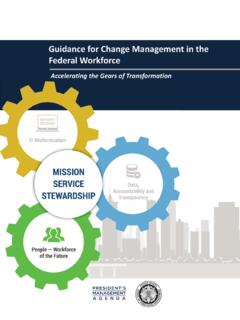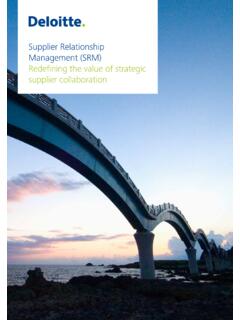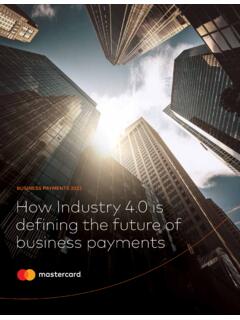Transcription of Reserve Forces Review 2030 - GOV.UK
1 Reserve Forces Review 2030 Unlocking the reserves potential to strengthen a resilient and global BritainMay 20213 Reserve Forces Review 2030 ContentsExecutive summary 7 Reserve Forces Review 2030 recommendations 11 Chapter 1 Context and the imperative for change 15 Chapter 2 Redefining the relationship between the reserves and society 25 Chapter 3 Expanding the role of the reserves 43 Chapter 4 Unlocking the potential of reservists 55 Chapter 5 Transforming support to the reserves 73 Engagement log 88 Glossary 1024 Reserve Forces Review 20305 Reserve Forces Review 2030 ForewordBrigadier The Rt Hon The Lord Lancaster TD VRWhen the Chief of the Defence Staff asked me to chair an independent Review into the Reserve Forces , I leapt at the opportunity. For over 32 years, the Army Reserve has been an integral part of my life and perhaps the one constant of my adult years. Like many fellow reservists, my service has been part of a fairly consistent juggling act between the competing demands of a hectic professional career, private life and soldiering.
2 In writing this foreword I recognise that so much has changed. The reserves have evolved from almost entirely contingent Forces that trained at weekends and annual camps, recruited locally, and were encapsulated by names such as Territorial Army and Royal Auxiliary Air force to the Reserve Forces we have today across all three services, delivering daily support and skills as part of a semi-integrated Haldane s creation of the Territorial force in 1908, which subsumed militia and volunteers, the reserves have always embraced change. It is perhaps because reservists are both drawn from, and are part of, society, that one of their key strengths over many years is their enduring capacity to adapt to the needs of the day. The relationship between the military and society, in which the Reserve Forces play a crucial role, is complex and changing, and the challenges the country has faced during COVID-19 have underlined how important that relationship is. The most recent reform was the future Reserves 2020 Review , which focused on both the growth and investment in the single service reserves.
3 Until that point the Reserve Forces were viewed by some as being in decline, having been used almost solely as a source of individuals to bolster a regular force exhausted after years of campaigning. Building on the undoubted success of the implementation of that Review over the last 10 years, the terms of reference for this Review are rather different. Rather than looking down and in at the use of reserves by the single services, we have been tasked with looking up and out .At its heart, this Reserve Forces Review 2030 (RF30) is about people and skills, and how Defence, industry, government and wider society can share them. This means looking at how Reserve Forces can provide capability across government departments, deliver networks into industry and academia, reinforce national resilience and homeland security, and renew and strengthen the link between the military and society in national experience of the COVID-19 pandemic has demonstrated in no uncertain terms how the nation needs to pull together in time of crisis and how government, Parliament, state institutions, industry and the general public rely on each other.
4 In harnessing this latent appetite to volunteer, our Review has looked at how the UK s Reserve Forces can provide a nucleus for this became quickly apparent that this cannot be just another Review that focused on reserves if it was, then it would fail in its intent. Rather, it needed to be a Review on the provision of defence capability in the round. It is apt, therefore, that our work has been able to inform the Integrated Review into Defence and Security, and we have drawn in large part on the Integrated Operating Concept, published in draft during the early stages of our own Review . 6 Reserve Forces Review 2030We have worked alongside the Defence People Strategy team to ensure coherence with their work. Many of our recommendations go far beyond those that may have been expected and we have consulted far and wide across government, industry, academia and of course the reserves themselves, to ensure that we have understood this wider landscape. At the very core of this Review is the reservist and a recognition of the need to ensure that the offer of service in the Reserve Forces remains not only attractive to the individual reservist but valued by their families and employers, Forces Review 2030 Executive summaryThe Reserves Forces Review 2030 describes a vision for the future .
5 It is designed to inform programmes that are likely to influence the development of the reserves and to initiate new projects where there are gaps. To achieve these objectives, it has liaised closely with the custodians of the Defence People Strategy and single services transformation programmes. The vision it describes is of empowered Reserve Forces that are further integrated with their regular counterparts and the wider defence enterprise, which at the same time provide greater utility and assurance across a broader range of military capabilities with access to civilian starting point for developing the vision was to understand how the reserves fit into the Integrated Operating Concept 2025, the new joint- force approach to meeting future defence and security challenges. Its emphasis on information-age capabilities, deeper resilience, persistent overseas engagement and increased integration has catalysed the need to think differently about the roles of the Reserve Forces . With the balance of the regular Forces activity shifting to operate against constant security threats, the reserves will increasingly be required to contribute more of Defence s warfighting capabilities.
6 This will mean the traditional role of the reserves will need to be enhanced if they are to deliver credible contingent capability with the required levels of assurance. The increase in grey-zone threats, like cyber-attacks and terrorist incidents, coupled with rises in natural disasters, will demand the reserves also play a more significant role in the strategic resilience of the nation. The challenges the armed Forces face in generating and maintaining the diversity, skills and networks needed to deliver modern capabilities will dictate an increasing use of reservists as an alternative source of talent to realise this vision, the Review recommends a Reserve framework consisting of three elements: Reinforcement, Operational and Strategic Reserves. Reservists whose principal role is to support routine defence activity will be managed within the Reinforcement Reserve . Not only will this improve the sharing of existing reservists talent across Defence, but also provide the mechanisms to draw new individuals into the armed Forces to access their skills, expertise and networks.
7 The Operational Reserve will comprise groups of reservists who are regularly trained and exercised for contingency tasks yet still able to perform routine duties. The Operational Reserve will require resilient force structures and access to synthetic training solutions to ensure that they can deliver their outputs at appropriate readiness. The Strategic Reserve will add further depth to the contingent capability. Built around the ex-regular Reserve Forces , it will be able to generate previously unassigned surge capacity and wider access to expertise in time of crisis or national emergency. The Strategic Reserve will have a minimal routine commitment but elements of it would be periodically exercised to ensure that it can act as a credible capability and deterrent to malign actors. 8 Reserve Forces Review 2030 The reserves will have to be enabled to deliver their new roles. This will be done in several ways. First, by redefining their relationship with employers and wider society.
8 Here the Review explores ideas to use the abilities of reservists to straddle the military and civilian landscapes to make a broader contribution to defence, enhance the government s Global Britain initiative and strengthen national resilience. This will require even closer partnerships with employers and improvements in the ways we incentivise them to share their workforces. Second, to improve the offer to our reservists and make it easier for them to fulfil their commitments, the Review recommends the establishment of a spectrum of service that allows reservists to move as freely as possible across the reserves framework, varying their levels of commitment and exploiting lateral methods of entry where appropriate. These changes, among other benefits, will help to improve diversity and inclusion within the armed Forces . The Review also recommends a series of initiatives designed to incentivise reservists commitment, for example by offering education and training bursaries and apprenticeships.
9 Finally, it argues that there is a need to tailor the support reservists receive. It recommends the establishment of a Reserves Support Organisation that: facilitates the unique characteristics of reservists provides visibility of their skills and networks, and the means to employ them at the point of need assures their ability to mobiliseIt also recommends: that Defence s digital and data services are adapted so they can better incorporate reservists into the whole force the tighter tying together of Reserve and regular training the exploitation of the Reserve estate At the heart of the Review s vision is a commitment to even greater integration of the reserves with the regulars and the wider defence enterprise. Transformation of the reserves cannot be achieved without transforming Defence itself. To enable this integration, it recommends that the Ministry of Defence (MOD): considers changes to legislation to ease transfers between commitment types moves away from workforce headcount targets that constrain planners freedom to flex requirements between workforces adopts a budgetary strategy that incentivises the use of reservistsThis would enable greater use of the reserves and accelerate Defence s aspirations towards a blended workforce model.
10 All of this would have to be done in close co-ordination with the ambitious Reserve programmes that are being developed within the single services and in line with the Defence People transformation Forces Review 2030 Underpinning all elements of the Review has been the need to develop a proposition that continues to attract and retain reservists. To this end, we believe this Review offers the future reservist: increased motivation by being able to play a larger part of the armed Forces warfighting capabilities improved opportunities to contribute and to mobilise at home and overseas greater choice and control over how they offer their service enhanced training, digital and support services tailored to their needs better physical and virtual infrastructure more opportunities to use their civilian skills in a military environment more incentives to encourage increased routine commitmentFigure illustrates the wide range of factors influencing this Review and lists key deductions underpinning the RF30 vision.
















